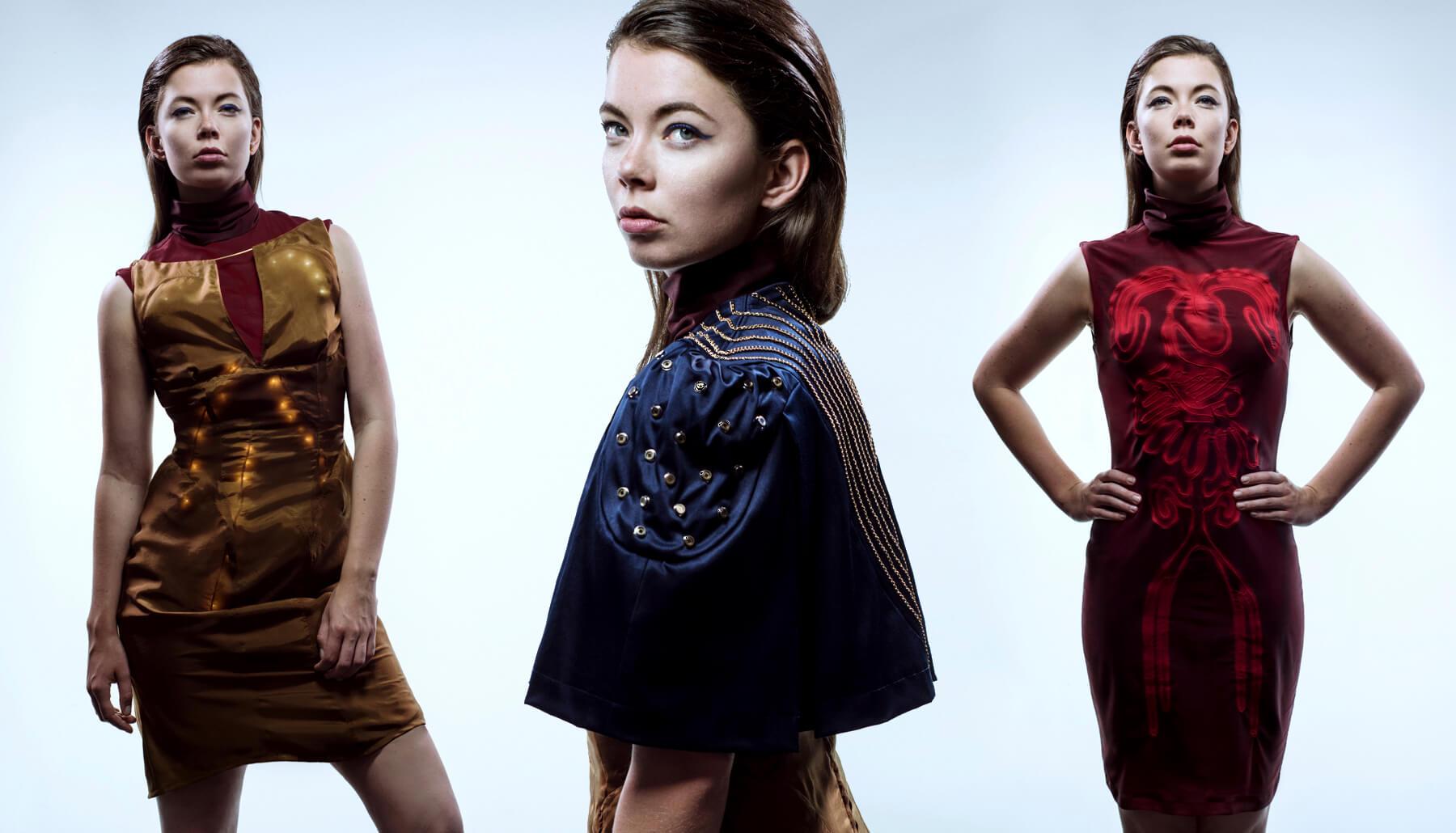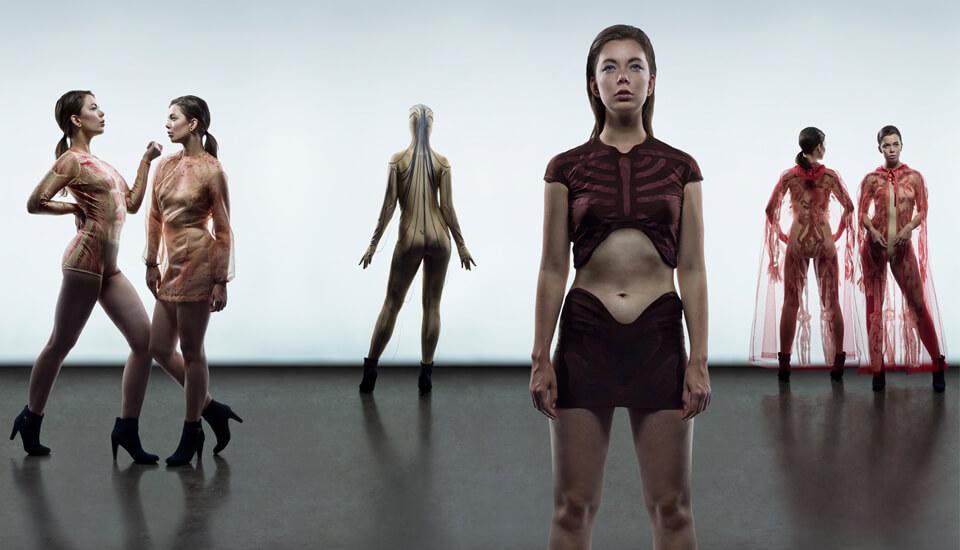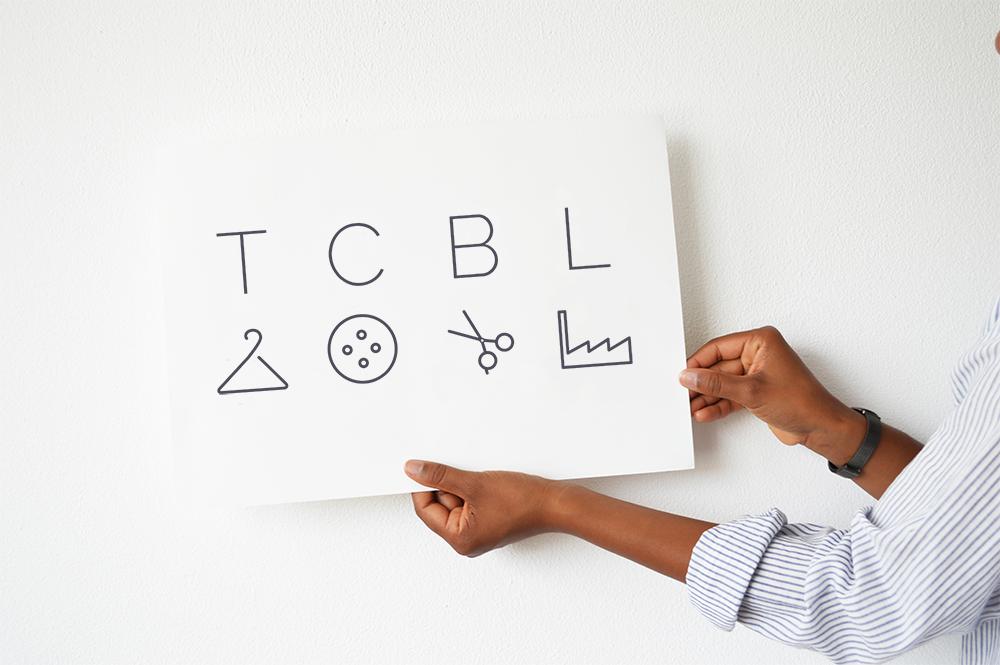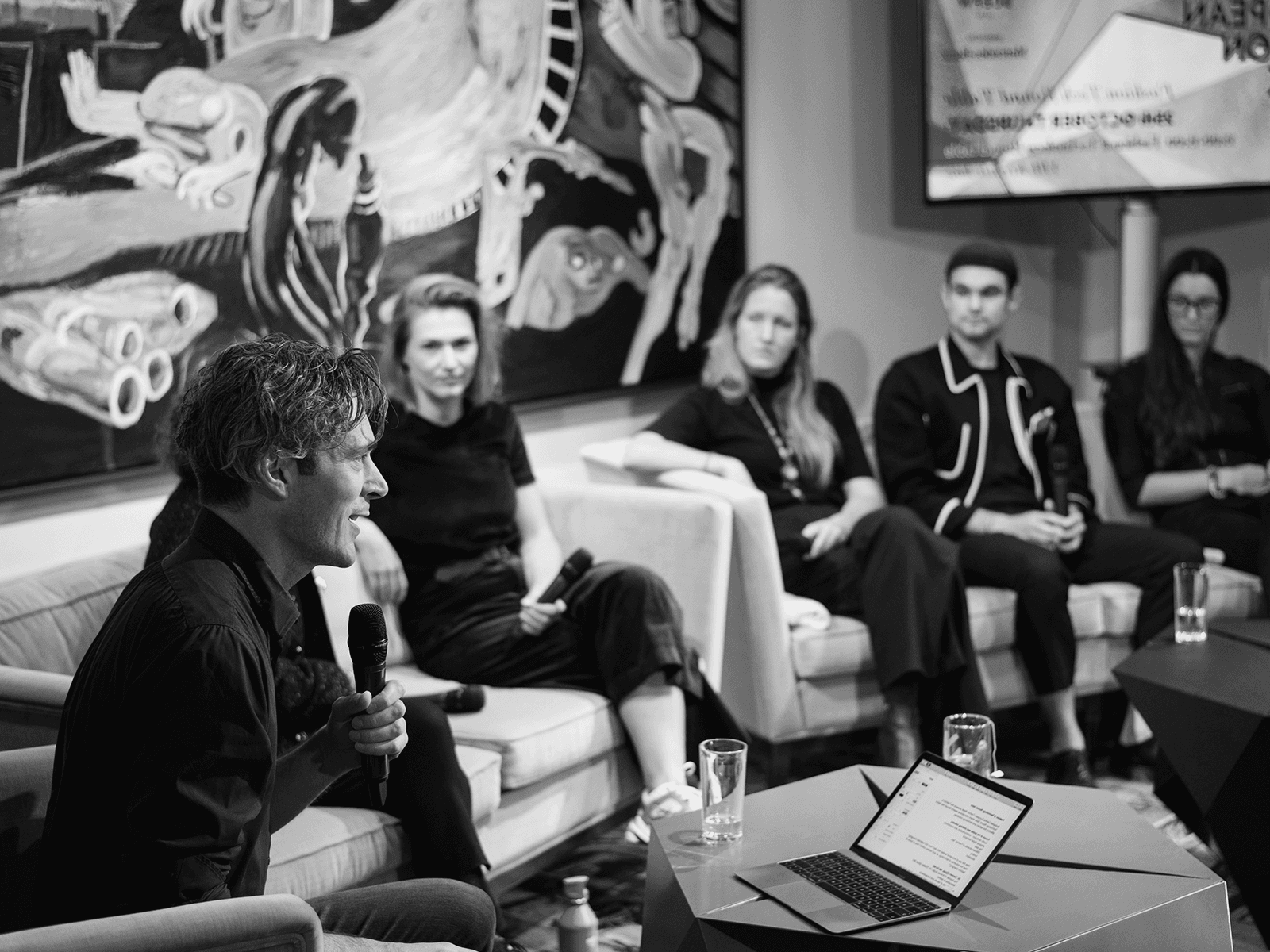Use of technology in the fashion industry is, at present, limited predominantly to gadgets and accessories that monitor what the body is doing and allow the user to react. A more interesting application, however, is to make the textile itself dynamic and responsive to the user’s needs. Neffa explored what possibilities technology offers for making textile organic and alive. The result is Dynamic Skin.
When creating Dynamic Skin, Neffa drew its inspiration from topographies of the human body and microbiome. In simple terms, Dynamic Skin collects and stores solar energy and uses that energy to generate warmth or light, forming its own metabolism. In the same way that the human body consumes food and uses that energy to power movement, Dynamic Skin collects and stores solar energy and uses it to generate warmth or light. Neffa began by designing five basic ‘inspirational outfits’ inspired by the human microbiome, blood circulation, muscles, nervous system and bones. It then added further detail and development to those five basic concepts.
Like the human skin, Dynamic Skin consists of layers.
Energy is used based on the wearer’s heart rate and circulation. A monitor translates the wearer’s heart rate into a LED pattern that reflects the rate at which blood is flowing through the wearer’s body. Heating threads in the textile cause the clothes to change colour, giving visual expression to the blood circulation. While creating awareness of our bodies’ internal heating function, they also provide actual warmth. The colour pallet is inspired by the human body: different skin tones combine beautifully with the blue of veins and the red of blood.
Made possible by the kind assistance of Waag and AGA LAB and with funding from the Fund Creative Industries NL.
Source: neffa.nl. Neffa is a registered trademark of Aniela Hoitink.



